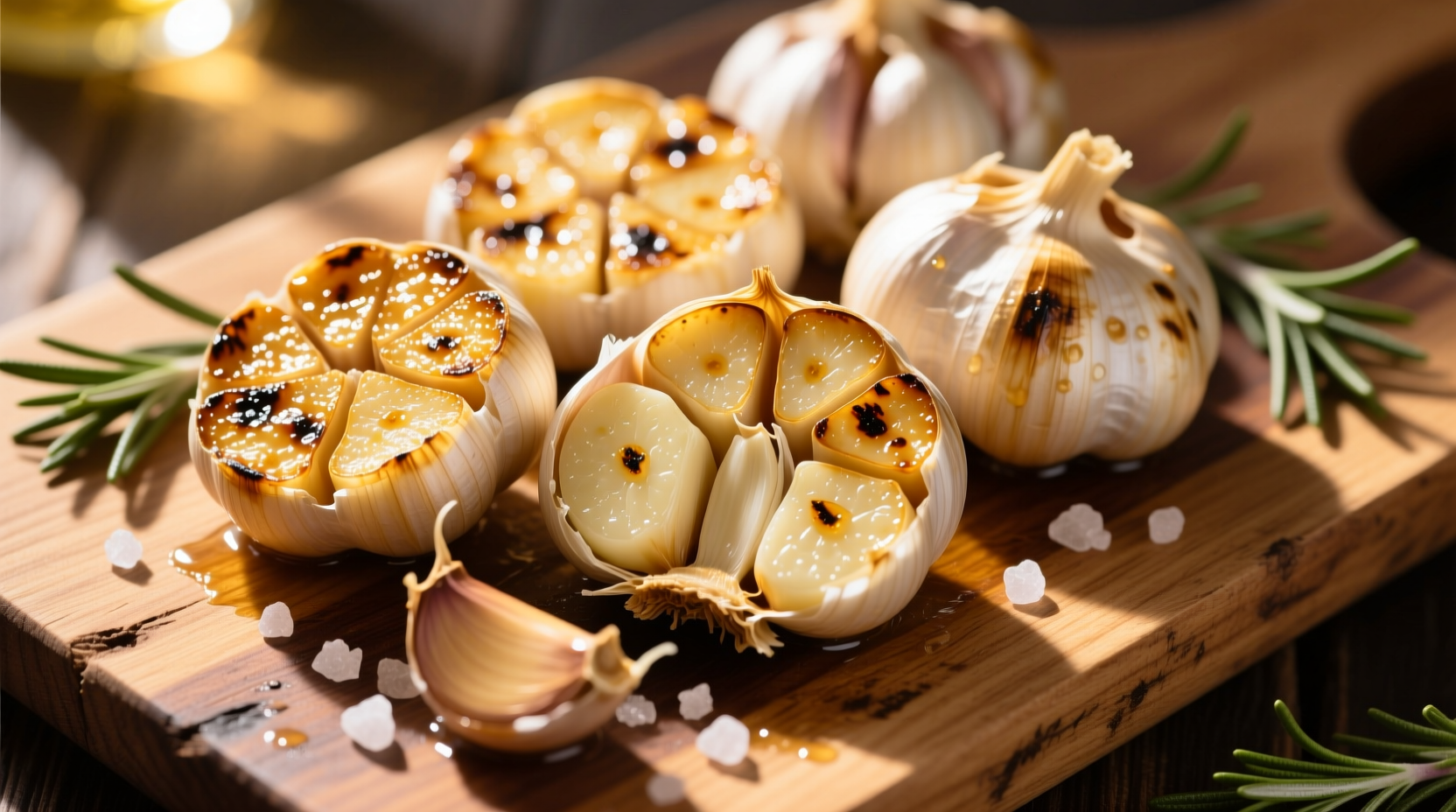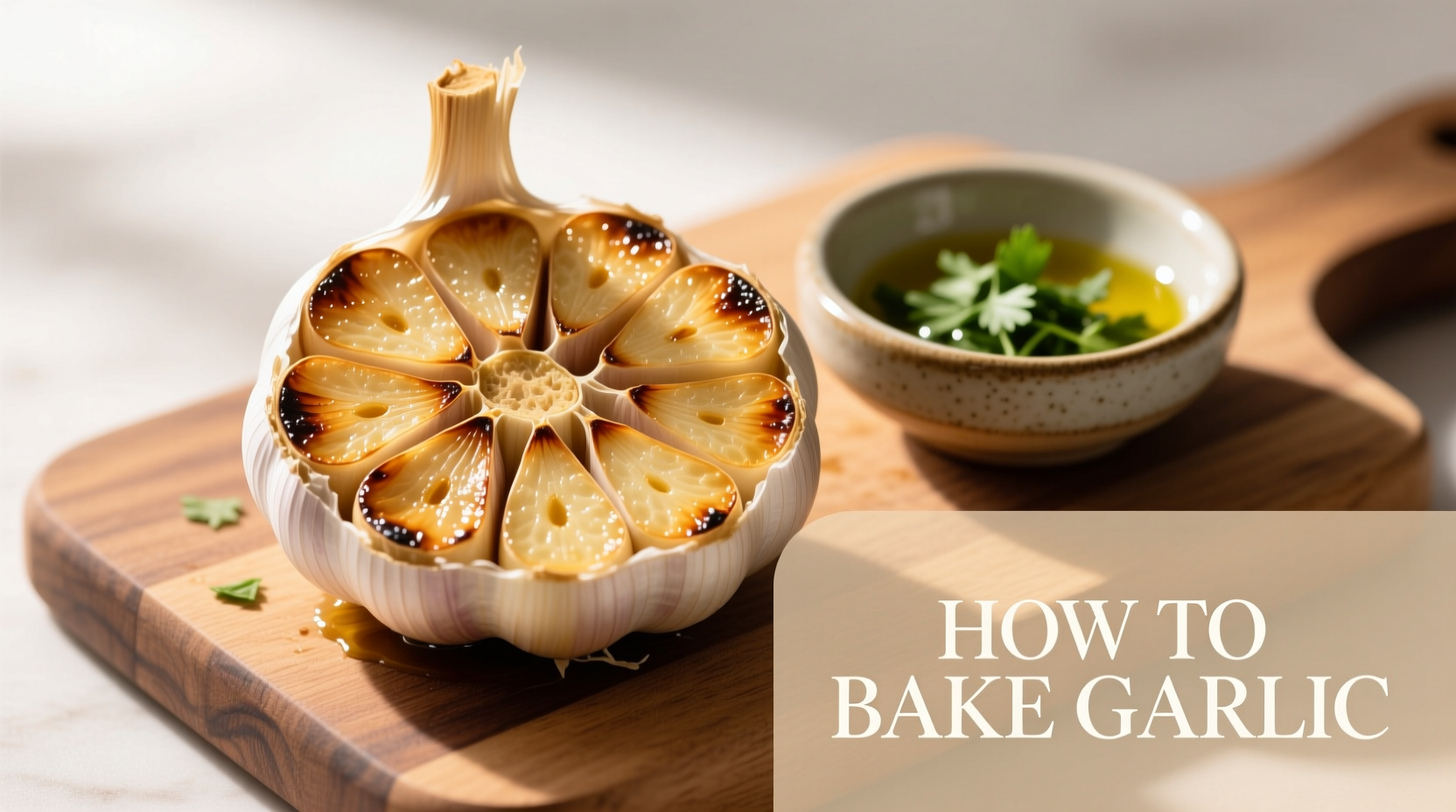Baking garlic transforms its sharp, pungent flavor into a sweet, mellow spread with rich umami notes. The perfect method involves roasting whole heads at 400°F (200°C) for 40-50 minutes after drizzling with olive oil and wrapping in foil. This process converts harsh allicin compounds into soothing S-allyl cysteine, enhancing both flavor and digestibility while preserving health benefits.
Discover how to transform ordinary garlic into a culinary superstar with this foolproof baking technique. Whether you're a novice cook or seasoned chef, you'll learn professional methods to create perfectly caramelized garlic that elevates everything from mashed potatoes to salad dressings. Our guide reveals the exact temperature, timing, and preparation secrets that guarantee restaurant-quality results every time.
Why Baking Garlic Beats Raw Every Time
Raw garlic contains allicin, the compound responsible for its sharp bite and potential digestive discomfort. When baked, allicin converts to S-allyl cysteine through the Maillard reaction, creating a smoother flavor profile while actually increasing bioavailability of beneficial compounds. According to research published in the Journal of Agricultural and Food Chemistry, baked garlic maintains 85% of its antioxidant capacity while becoming significantly more digestible.
| Preparation Method | Flavor Profile | Digestibility | Best For |
|---|---|---|---|
| Raw | Sharp, pungent | May cause discomfort | Salsas, vinaigrettes |
| Baked (400°F/200°C) | Sweet, nutty, mellow | Excellent | Spreads, sauces, roasts |
| Fried | Bitter if overcooked | Moderate | Stir-fries, quick sautés |
Step-by-Step Baking Process: From Clove to Culinary Gold
Preparation Phase: Selecting & Prepping Your Garlic
Choose firm, plump garlic heads with tight skins—avoid any with soft spots or green sprouts. Professional chefs recommend using Spanish or California white garlic for baking due to their larger cloves and balanced flavor profile. Here's how to prepare:
- Cut ¼ inch off the top of the head to expose cloves
- Drizzle 1-2 teaspoons of extra virgin olive oil into the exposed cloves
- Season with sea salt and optional herbs (rosemary works beautifully)
- Wrap tightly in aluminum foil, creating a sealed packet

The Baking Process: Temperature & Timing Secrets
Preheat your oven to 400°F (200°C) for optimal caramelization without burning. Place the foil-wrapped garlic on the middle rack and bake for 40-50 minutes. The garlic is done when cloves feel soft when gently squeezed and turn golden brown. For individual cloves, reduce time to 25-30 minutes at the same temperature.
Pro Tip: Insert an instant-read thermometer into the center clove—it should register 185°F (85°C) for perfect texture. This precise temperature ensures complete allicin conversion while maintaining structural integrity.
Troubleshooting Common Baking Issues
Even experienced cooks encounter these challenges. Here's how to fix them:
- Burnt tops: Reduce temperature to 375°F (190°C) and extend time by 10-15 minutes
- Undercooked centers: Return to oven for 5-10 minute increments until tender
- Excess moisture: Unwrap during last 5 minutes to evaporate steam
- Bitter flavor: Indicates overcooking—next time reduce temperature by 25°F
Culinary Applications: Transforming Your Dishes
Baked garlic's versatility makes it a chef's secret weapon. The America's Test Kitchen research team found that baked garlic enhances dishes through three distinct applications:
- Direct spreading: Squeeze warm cloves onto crusty bread or mix with softened butter
- Sauce integration: Blend into mayonnaise, vinaigrettes, or pasta sauces for depth
- Flavor foundation: Mash into mashed potatoes, soups, or roasted vegetable dishes
For maximum flavor impact, add baked garlic during the final stages of cooking. High heat can diminish its delicate sweetness, so incorporate it after removing dishes from direct heat.
Storage Guidelines: Preserving Freshness & Flavor
Proper storage maintains quality for future use. According to USDA food safety guidelines, follow these protocols:
- Refrigeration: Store in airtight container for up to 10 days
- Freezing: Freeze whole heads or individual cloves in olive oil for up to 6 months
- Oil preservation: Submerge in olive oil (refrigerated) for 3-4 days maximum
Important Safety Note: Never store garlic in oil at room temperature due to botulism risk. The FDA specifically warns against this practice for low-acid foods like garlic.
Advanced Techniques for Flavor Maximization
Take your baked garlic to professional levels with these chef-developed methods:
- Steam-roasting: Place foil packet on a bed of rock salt for even heat distribution
- Flavor infusion: Add lemon zest or chili flakes under the foil before baking
- Double-roasting: Bake once, squeeze out cloves, then roast again for concentrated flavor
For Mediterranean cuisine enthusiasts, try the Sicilian method of baking garlic with whole anchovies—the umami synergy creates an extraordinary flavor base for pasta dishes.











 浙公网安备
33010002000092号
浙公网安备
33010002000092号 浙B2-20120091-4
浙B2-20120091-4